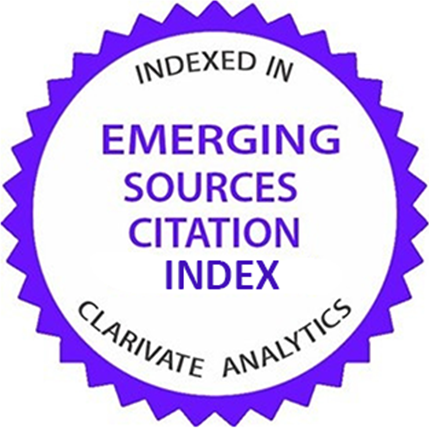The utilization of pain assessment tools in pediatric emer- gency for better pain management
Abstract
Objective: Accurate assessment of acute pain in children is essential for effective emergency care but can be challenging due to varying pain expressions across ages. Our study aims to examine healthcare providers’ efforts to enhance assessment using age-appropriate tools.
Methods: Patients were retrospectively selected from the King Abdulaziz University Hospital Emergency records which involved a cohort review of 157 children presented to the pediatric emergency department with acute pain from 2017 to 2018. Routine pain assessment tool grading acute pain as mild, moderate, severe by qualified pediatric emergency doctors, Canadian triage acuity scale (CTAS) and numerical rating scale (NRS) were used to describe pain intensity. Inter-statistical cohort analysis was used.
Results: The mean age of patients were 8±3.3 years (range: 2.5-13.9 years) with 73 girls and 84 boys. About 80% (n=126) of the children presented to the emergency department with acute pain were scored as CTAS 2-3. All triaged patients passed to the emergency department were assessed as mild (n=66, 42%), moderate (n=27, 17%) and severe (n=35, 22%) pain. The NRS scoring was used in only 12 (7.6%) children as NRS only applies to older children. Paracetamol and nonsteroidal anti-inflammatory drug (NSAID) were the most frequent analgesia administered by the health care providers. There was a statistically insignificant relationship between the severity of the pain and the type of analgesia (P value>0.05). Children with mild pain had a significantly higher level of NSAID administration than those with moderate or severe pain (P<0.05). Children with mild pain had a significantly higher level of NSAID administration than those with moderate or severe pain (P<0.05)
Conclusion: Pain assessment with scoring methods like CTAS or NRS in the emergency room (ER) is crucial despite challenges. Inconsistent use affects outcomes, emphasizing the need for research to encourage consistent application in pediatric emergency care.
Valani R, Kassam F, Jose S, Hanna M, Sharma T, Sriranjan J, et al. Predictors of triage pain assessment and subsequent pain management among pediatric patients presenting to the emergency department. PLoS One. 2023;18(12):e0296240.
Anderson JL, Oliveira JESL, Funni SA, Bellolio F, Jeffery MM. Epidemiology of paediatric pain-related visits to emergency departments in the USA: a cross-sectional study. BMJ Open. 2021;11(8):e046497.
The Joint Commission. Setting the Standard. 2005. Joint Commission Web site. Available at: http://www.jointcommission.org/nr/rdonlyres/6c33fedb-bb50-4cee-950b-a6246da4911e/0/setting_the_standard.pdf. Accessed July 10, 2020.
Manworren RC, Stinson J. Pediatric pain measurement, assessment, and evaluation. Semin Pediatr Neurol. 2016;23(3):189-200.
Gaglani A, Gross T. Pediatric pain management. Emerg Med Clin North Am. 2018;36(2):323–34.
Stinson JN, Kavanagh T, Yamada J, Gill N, Stevens B. Systematic review of the psychometric properties, interpretability and feasibility of self-report pain intensity measures for use in clinical trials in children and adolescents. Pain. 2006;125(1-2):143-57.
Krauss BS, Calligaris L, Green SM, Barbi E. Current concepts in management of pain in children in the emergency department. Lancet. 2016;387(10013):83–92.
Debra F, Bolick BN. Assessing a child's pain. Am J Nurs: 2019;119(5) 34-41.
Young KD. Pediatric procedural pain. Ann Emerg Med. 2005;45(2):160-71.
Gosnell E, Thikkurissy S. Assessment and management of pain in the pediatric patient, in pediatric dentistry (Sixth Edition), 2019.
Manworren RC, Hynan LS. Clinical validation of FLACC: preverbal patient pain scale. Pediatr Nurs. 2003;29:140-6.
Garra G, Singer AJ, Taira BR, Chohan J, Cardoz H, Chisena E, et al. Validation of the Wong-Baker FACES pain rating scale in pediatric emergency department patients. Acad Emerg Med. 2010;17(1):50-4.
Bailey B, Daoust R, Doyon-Trottier E, Dauphin-Pierre S, Gravel J. Validation and properties of the verbal numeric scale in children with acute pain. Pain. 2010;149(2):216-21.
Tsze DS, von Baeyer CL, Pahalyants V, Dayan PS. Validity and reliability of the verbal numerical rating scale for children aged 4 to 17 years with acute pain. Ann Emerg Med 2018;71:691-3.
Tsze DS, Hirschfeld G, von Baeyer CL, Suarez LE, Dayan PS. Changes in pain score associated with clinically meaningful outcomes in children with acute pain. Acad Emerg Med. 2019;26(9):1002-13.
Voepel-Lewis T, Burke CN, Jeffreys N, Malviya S, Tait AR. Do 0-10 numeric rating scores translate into clinically meaningful pain measures for children? Anesth Analg. 2011;112(2):415-21.
International Federation of Emergency Medicine. Standards of care for children in emergency departments. Melbourne, Australia: 2022.
Abouzida S, Bourgault P, Lafrenaye S. Observation of emergency room nurses managing pediatric pain: care to be given… care given…. Pain Manag Nurs. 2020;21(6):488-94.
Tomlinson D, von Baeyer CL, Stinson JN, Sung L. A systematic review of faces scales for the self-report of pain intensity in children. Pediatrics. 2010;126(5):1168-98.
Singer AJ, Gulla J, Thode HC Jr. Parents and practitioners are poor judges of young children's pain severity. Acad Emerg Med. 2002;9:609-12.
Belter RW, McIntosh JA, Finch AJ, Saylor CF. Preschoolers' ability to differentiate levels of pain: relative efficacy of three self-report measures. J Clin Child Psychol. 1988;17:329-35.
Chambers CT, Reid GJ, Craig KD, McGrath PJ, Finley GA. Agreement between child and parent reports of pain. Clin J Pain. 1998;14(4):336-42.
Bulloch B, Tenenbein M. Assessment of clinically significant changes in acute pain in children. Acad Emerg Med. 2002;9:199-202.
Todd KH, Funk KG, Funk JP, Bonacci R. Clinical significance of reported changes in pain severity. Ann Emerg Med. 1996;27:485-9.
Motov SM, Khan AN. Problems and barriers of pain management in the emergency department: are we ever going to get better? J Pain Res. 2009; 2: 5-11.
Kellogg KM, Fairbanks RJ, O'Connor AB, Davis CO, Shah MN. Association of pain score documentation and analgesic use in a pediatric emergency department. Pediatr Emerg Care. 2012;28(12):1287-92.
| Files | ||
| Issue | Vol 9 No 2 (2025): Spring (April) | |
| Section | Original article | |
| DOI | 10.18502/fem.v9i2.19191 | |
| Keywords | ||
| Acute Pain Assessment Tools Numeric Rating Scale Pediatric Emergency Scoring | ||
| Rights and permissions | |

|
This work is licensed under a Creative Commons Attribution-NonCommercial 4.0 International License. |










